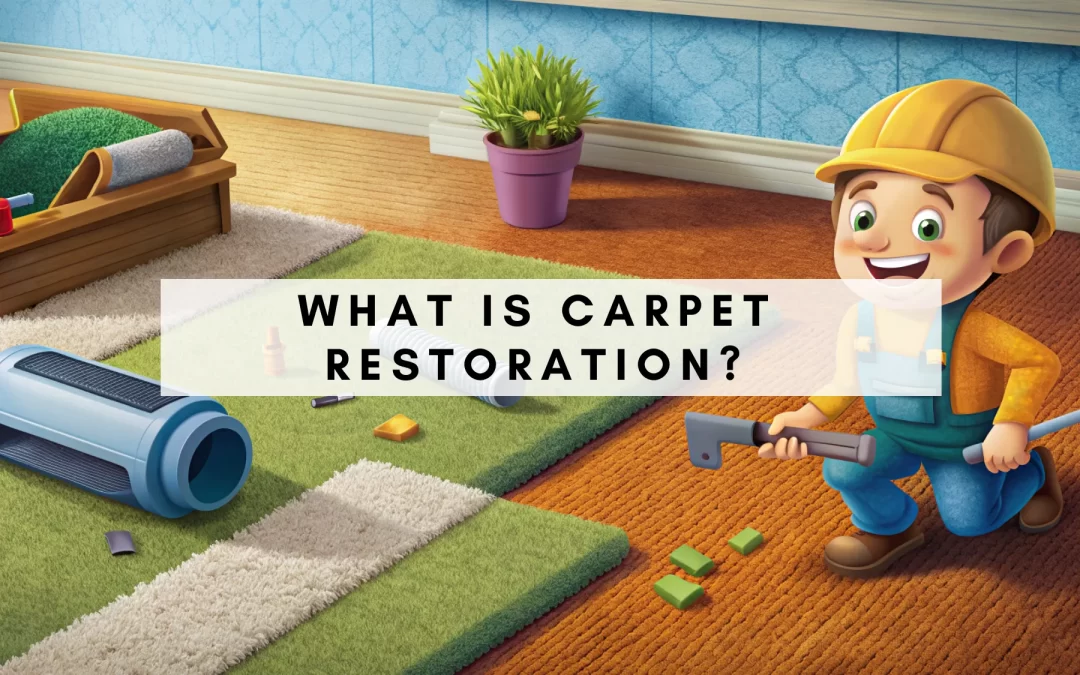Carpet restoration is a process that revives and repairs carpets that have severe stains, burns, water damage, or significant wear and tear. It goes beyond regular cleaning to make old or damaged carpets look like new again. This detailed process aims to return carpets to their original condition or as close to it as possible.
Carpet restoration involves various techniques, such as patching damaged areas, re-stretching to remove wrinkles, replacing sections, color correction, and deep cleaning. By addressing both the visible and hidden issues, carpet restoration ensures your carpets are clean, structurally sound, and visually appealing.
The Comprehensive Process of Carpet Restoration
Carpet restoration is more than just cleaning. It involves several advanced techniques and steps to ensure the carpet is thoroughly revived and repaired. Here’s a closer look at what carpet restoration entails:
Advanced Techniques
Carpet restoration uses advanced techniques such as:
- Patching Damaged Areas: Fixes holes or severely damaged spots by replacing them with patches from a hidden area or a matching piece.
- Re-Stretching to Remove Wrinkles: This method uses power stretchers to eliminate wrinkles or bubbles, making the carpet smooth and flat again.
- Replacing Sections: In cases of extreme damage, entire sections of the carpet may be replaced to restore its appearance.
- Color Correction: Restores the carpet’s original color, correcting any discoloration or fading.
- Complete Carpet Replacement: Complete replacement might be necessary for carpets that are beyond repair.
Deep Cleaning
The goal of carpet restoration is not just surface cleaning but a deep clean that addresses embedded dirt and stains. This includes:
- Deep Scrubbing with Specialized Chemicals: Removes tough stains and deep-seated dirt that regular cleaning cannot reach.
- Stain Removal Targets specific stains, such as wine, coffee, or pet stains, to restore the carpet’s appearance.
Damage Repair
Carpet restoration also focuses on repairing various types of damage, including:
- Fixing Cigarette Burns: Repairs small burn marks, blending them with the surrounding carpet.
- Discoloration Repair: Corrects areas where the carpet has faded or discolored.
- Rips and Tears: Mends torn sections to restore the carpet’s integrity.
When Is Carpet Restoration Needed?
Carpet restoration is required when carpets have experienced significant damage or degradation. It is often needed in the following situations:
- Major Damage occurs when carpets have burns, large stains, or significant wear and tear that regular cleaning cannot fix.
- Moving into a New Home: If the home has older, heavily soiled, or damaged carpets, restoration can make them look like new.
- Prolonging Carpet Life: Regular restoration can extend the carpet’s life, making it a cost-effective solution compared to replacement.
The Benefits of Professional Carpet Restoration
Choosing professional carpet restoration over replacement offers several benefits:
- Cost-Effective: Restoration is often less expensive than buying and installing new carpets.
- Eco-Friendly: Reduces waste by salvaging the existing carpet instead of discarding it.
- Maintains Aesthetic Appeal: Keeps the original look and feel of the carpet, preserving its design and color.
- Quick and Convenient: Restoration is usually faster and less disruptive than a full replacement.
Conclusion
Carpet restoration is valuable for anyone looking to maintain or revive their carpets. It’s especially useful for those moving into new homes with older carpets, providing a fresh start without needing complete carpet replacement.
Investing in carpet restoration lets you enjoy clean, beautiful carpets that look and feel like new. Contact a professional carpet restoration service today to give your carpets the care they deserve.

